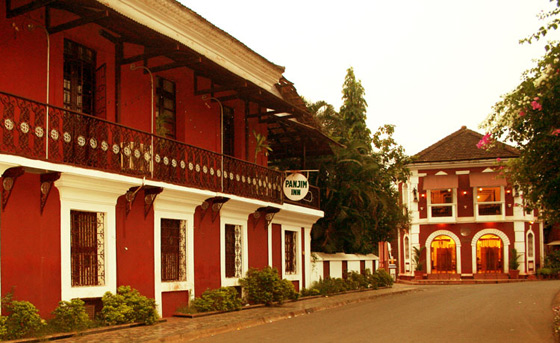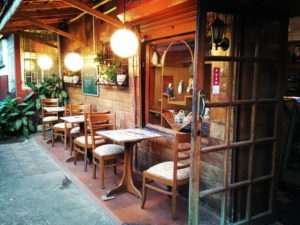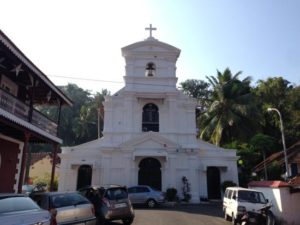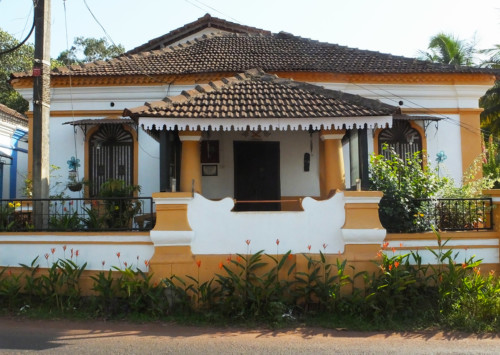The colourful Fontainhas in Goa
The colourful Fontainhas in Goa’s capital city Panaji is perhaps the coastal state’s oldest Latin quarter. Hiding tiny and wonderful secrets in its thoroughfares, it is a delight for explorers and wayfarers.
Not for the sand or the sea, I fell in love with Goa while strolling about its old but oh so beautiful colonies and they are calling me again…
Boasting of a strong Portuguese influence in their architecture, the homes and buildings in Fontainhas are all painted in pastels or fluorescents. Their domineering windows and ancient doors seem like they are an entry to the time gone by and to the Portuguese colony the place once used to be.
Oozing an old world charm in the state’s capital city Panaji, Fontainhas is perhaps Goa’s oldest Latin quarter; and it vibes off the colour and appeal of a quaint European town. The Portuguese who ruled Goa for almost 450 years have left behind a legacy that is now not just synonymous with this place but is what makes it unique.
It is unlike any other part of Goa. A criss-cross of streets of colourful homes with facades pretty and inviting; one lane leading to another and then the other, Fontainhas is a maze a wayfarer might want to get lost into.
Not just the colours, the quietness of the neighbourhood too makes it stand out from rest of Goa, which is submerged in the sounds of sea waves and the party craze. This part of Goa is beyond the tourist flocked beaches, but is by a bay that sees much frolic.
There are floating casinos (including Goa’s largest) and mini cruises swaying just in the neighbourhood on the Mandovi river, which sees a rush of locals and tourists flee to its bay all day long. The parties happening on board are a joyous and cheerful treat but the sounds from them don’t seep through the quietness of Fontainhas, corners of which are still clutched in an another time.
Some secrets tucked away…
There are shops and cafes here that are hundreds of years old. While some of them like a typewriter’s atelier are ageing to the hands of time and seizing to run, bakeries like the Confeitaria 31 de Janeiro continue to flourish. Dating back to 1930, it gets its name from the street of the same name, where it is hiding in the corner of a Fontainhas alley making this tiny, old bakery one of Goas’ best kept secrets. It’s so small it can accommodate only four-five people at a time but the smorgasbord that lays at its counter is there to cater possibly all families of the neighbourhood. The best of traditional Goan sweets are on display, and some of Goa’s most enjoyed local dishes are also on the menu.
Head out the narrow lane of 31 de Janeiro and walk towards the southern end of Fontainhas to come to the Chapel of St Sebastian. Built in 1880, the church is so well kept, it dominates its colourful neighbourhood with its spotless white exterior.
Another of Fontainhas’ churches is the São Tomé Church in the north of the Latin quarter. Built in 1849, it is interestingly positioned across the town pillory, where justice was handed out in the form of executions, the last of which took place in 1843.
Also visit the ‘Fonte Phoenix’ or the ‘Fountain of Phoenix’, a water reservoir constructed during the time of the Portuguese and the source from which Fontainhas derives its name.

















